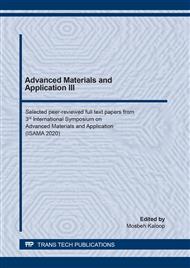p.1
p.6
p.12
p.18
p.23
p.29
p.34
p.41
Reduction of Surface Cracks at Al-Mg Alloy Strip Surface Cast by Unequal Diameter Twin Roll Caster
Abstract:
Al-Mg alloy strips were cast by an unequal-diameter twin-roll caster. It was found that cracks formed on the surface at grain boundaries. The grains near the surface were small in size, which likely contributed to crack formation. The use of a molten metal pouring method to increase the grain size near the surface is proposed to reduce cracks. In the previous method, molten metal is poured into a pool, which is on the lower roll surrounded by side-dam plates, a back-dam plate, and the upper roll. In this study, molten metal was directly poured onto the roll surface at a shallow angle using a launder. When the angle was smaller than 20°, cracks did not form. With the proposed method, the heat transfers between the molten metal and the roll surface decreased, as determined from the grain size and strip thickness. The cracks on the strip surface were color-checked and visually inspected.
Info:
Periodical:
Pages:
6-11
Citation:
Online since:
August 2020
Authors:
Price:
Сopyright:
© 2020 Trans Tech Publications Ltd. All Rights Reserved
Share:
Citation:


